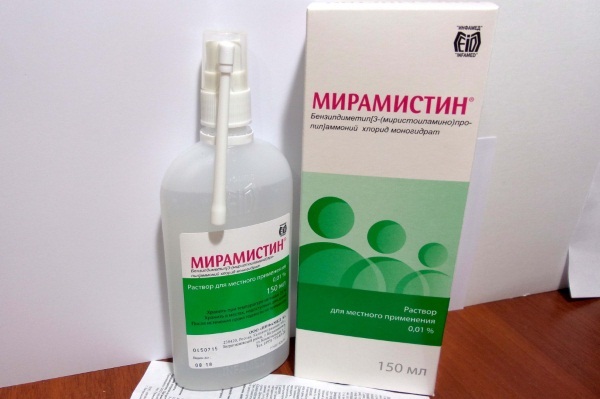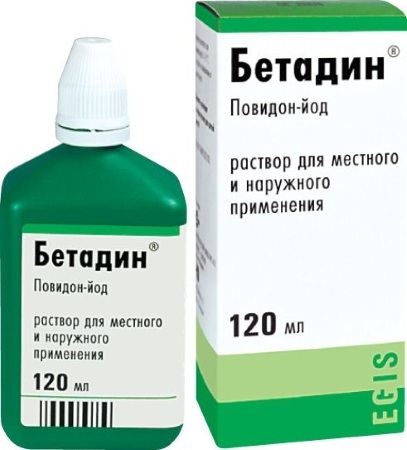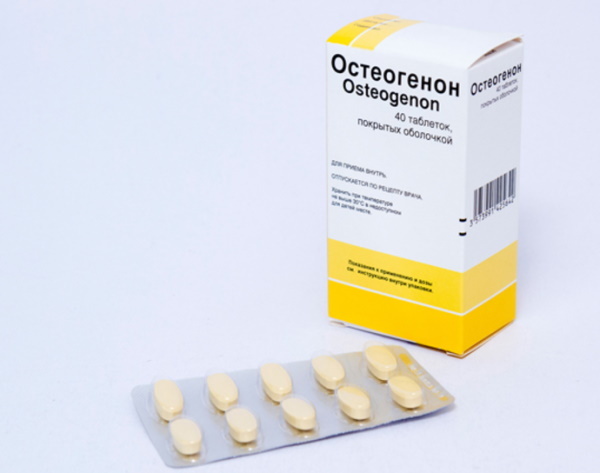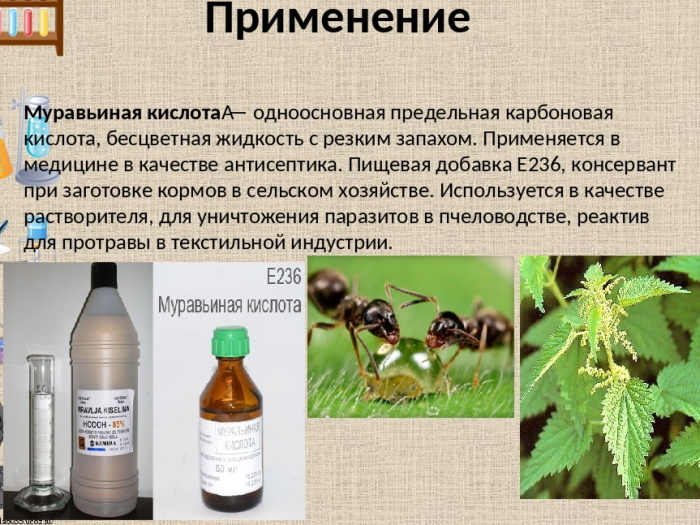Content
- Action analogs
- Chlorhexidine
- Chlorophyllipt
- Furacilin solution
- Betadine
- Clotrimazole
- Video about Miramistin's analogues
Miramistin is a colorless and transparent solution local spectrum of action, the active component of which is the chemical substance benzyldimethyl ammonium chloride monohydrate at a concentration of 0.01%. Purified water performs the auxiliary function of this drug. Miramistin belongs to the pharmacological group of drugs with antiseptic properties.
This medication is effective against most bacterial, viral and fungal microorganisms, including hospital strains of infections that are resistant to antibiotics. At the same time, a whole list of antiseptic solutions is presented on the pharmaceutical market, which are cheaper analogues of this drug.
Miramistin is a drug that does not have the pharmacological property to overcome the protective layer of the skin and mucous membranes. The advantage of this drug is that its active ingredient destroys pathogens exclusively in the field of its application.
The active substance of this medication does not saturate the general blood flow, does not disrupt the work of internal organs and life support systems of the body. Miramistin is used in the field of otolaryngology, gynecology, dentistry and hospitals of surgical departments, and its average cost ranges from 182 to 240 rubles. per bottle with a capacity of 50 ml. In the list of analogs of this remedy, there are a large number of cheap antiseptic solutions.
Action analogs
Medicines with similar antiseptic properties differ in a different chemical composition, mechanism of action in against infectious microorganisms, but at the same time provide exactly the same antimicrobial, antiviral and antifungal the effect.
Chlorhexidine
Chlorhexidine is a local-spectrum antiseptic that comes in the form of a completely transparent solution with a slight light yellow tint. The active substance of this drug is the chemical compound chlorhexidine bigluconate at a concentration of 5 g per 100 ml of the finished medication. According to the mechanism of its action, Chlorhexidine is an analogue of the drug Miramistin. This agent is likewise not absorbed into the composition of the general bloodstream, realizing its therapeutic properties exclusively at the site of its application.
Chlorhexidine exhibits antibacterial activity against most of the known strains of gram-positive and gram-negative microorganisms. In the presence of ambient temperature conditions within +22 degrees Celsius, this agent destroys bacteria within 1 minute. The fungicidal properties of the Chlorhexidine solution are realized within 10 minutes.
This drug exhibits antiseptic activity against all lipophilic viruses. The death of spores of bacterial microorganisms occurs only if the application of the drug Chlorhexidine was carried out in an ambient temperature above +25 degrees Celsius.
Miramistin and analogues are cheaper (a list of drugs with exactly the same properties is publicly available on the Internet) are used in all industries practical medicine, which requires regular antiseptic treatment of wound surfaces, tissues that have signs of inflammatory process.
The drug Chlorhexidine is indicated for use in the following cases:
- erosion of the mucous membrane and tissues of the cervix;
- stomatitis;
- inflammation of the gums;
- routine disinfection of removable dental prostheses;
- chlamydia;
- complex treatment of syphilis, gonorrhea and other sexually transmitted infections;
- chemical, thermal or electrical burns (in this case, antiseptic treatment of wound surfaces is performed to prevent their infection with bacteria);
- inflammatory diseases of the genitourinary system;
- purulent tonsillitis.
Chlorhexidine is used to disinfect surgical instruments, treat the skin of critically ill patients to remove pathogens. This drug can be used as a post-operative care product. In this case, the treatment of the seam with Chlorhexidine solution accelerates the wound healing process, prevents the development of the inflammatory process.
The dose and dosage regimen of the Chlorhexidine drug depend on the area of its application, as well as the area of the wound surface. The final dosage and frequency of applying the medication to the diseased area of the body is determined by the attending surgeon, gynecologist or otolaryngologist.
During therapy with Chlorhexidine solution, the following side effects may occur:
- anaphylactic shock, the presence of which indicates an acute allergic reaction of the body;
- change in the color shade of the enamel of the teeth towards darkening;
- disruption of the taste buds;
- increased dryness of the skin;
- tartar formation;
- itching and rash of the skin.
In case of manifestation of the above adverse reactions, it is necessary to immediately stop further therapy with this drug, and also immediately consult a doctor. It is important to remember that the Chlorhexidine solution is contraindicated for women in pregnancy, breastfeeding, and for people prone to allergies. The average cost of this medication is from 9 to 23 rubles. per bottle with a capacity of 100 ml.
Chlorophyllipt
Chlorophyllipt is an antiseptic agent for external use, which is available in the form of an oily solution with an active substance concentration of 2%.
The active ingredient of this drug is an extract obtained from the leaves of the globular eucalyptus. The mass fraction of this substance is 2 g per 100 ml of an already finished drug. The filling of the medication is carried out in dark glass vials with a capacity of 20 and 30 ml. Chlorophyllipt belongs to the pharmacological group of antimicrobial phytopreparations of herbal origin.
This remedy, an analogue of Miramistin, has the following properties:
- relieves the inflammatory process;
- destroys bacterial microorganisms;
- has an antiviral effect;
- destroys fungal colonies;
- improves tissue trophism;
- promotes faster wound healing.
Clinical trials and the results of the practical use of Chlorophyllipt solution show that the best the therapeutic effect of using this drug is observed during the treatment of patients infected staphylococcal infection.
The drug Chlorophyllipt is indicated for use in the following cases:
- vaginitis of a bacterial origin;
- colpitis;
- erosion of the mucous membrane and tissues of the cervix;
- laryngitis;
- stomatitis;
- gingivitis;
- pyelonephritis;
- extensive wound surfaces resulting from burns of various etiologies;
- trophic ulcers;
- dermatitis.
Chlorophyllipt oil solution has proven to be effective in the treatment of gynecological diseases that accompanied by acute or chronic inflammation of the vaginal mucosa, are of an infectious nature origin.
Miramistin and analogues are cheaper (the list of these funds contains antiseptic solutions) can be purchased at most city pharmacies. The use of the drug Chlorophyllipt is carried out locally, in the form of inhalation or by intracavitary introduction into the depths of damaged tissues. The dose of the medication is determined individually by the attending physician.
During therapy with Chlorophyllipt solution, the following side effects may occur:
- when applied to the skin surface and open wounds, the manifestation of local allergic reactions in the form of itching, rash, urticaria is not excluded;
- during oral administration, a disorder of the gastrointestinal tract may occur in the form of diarrhea, nausea, vomiting;
- the application of Chlorophyllipt to the mucous membranes causes their excessive dryness.
Side effects from the use of Chlorophyllipt oil solution are extremely rare. In most cases, this medication is well tolerated by patients of different age groups. At the same time, this drug is contraindicated in patients who have an increased tendency to manifestation of allergic reactions, or suffer from atrophic processes on the mucous membrane respiratory organs.
This limitation on the use of Chlorophyllipt solution applies to those patients who use the medication for steam inhalation. The average cost of this drug is within 137 rubles. for 1 bottle with a capacity of 20 ml.
Furacilin solution
Furacilin solution is an effective antiseptic that can be purchased without a prescription from your doctor. The composition of this drug contains the active substance furacilin in a dosage of 0.066 g. An auxiliary function is performed by ethyl alcohol of 70% concentration.
The filling of the medication is carried out in dark glass vials with a capacity of 20 ml each. Furacilin solution has a pronounced bactericidal effect, destroying infectious microorganisms on the mucous membranes and damaged tissues of open wounds.
A solution of Furacilin is applied in 8-10 drops to a sterile cotton swab, and then leaned against the focus of the infectious process. This remedy is applied 1-2 times a day, depending on the indications of the attending physician.
The duration of the therapeutic course is determined by the doctor. Before using the drug Furacilin, it is necessary to warm the solution to the patient's body temperature. This will speed up the process of interaction of the active substance of the drug with pathogenic microorganisms.
During treatment with an alcoholic solution of Furacilin, side effects of this drug in the form of local dermatitis are possible. In general, the drug is well tolerated by patients of all age groups, is not absorbed into the general bloodstream and does not disrupt the function of internal organs.
Furacilin solution is contraindicated for use in patients who are prone to allergic reactions to furacilin or ethyl alcohol, and also have external signs of dermatoses. Storage of this product should be carried out in temperature conditions not higher than +25 degrees Celsius, away from direct sunlight. The average cost of an alcoholic solution of Furacilin is 63 rubles.
Betadine
Miramistin and analogues are cheaper (the list of medicines in this category includes antiseptics for external use) are dispensed without a prescription from the attending physician. Betadine is a drug that is a dark brown solution with a pronounced smell of iodine. The filling of this drug is carried out in polyethylene bottles and cardboard boxes, complete with instructions for its use. The table below shows the constituent components of the Betadine solution.
| Composition of the Betadine preparation | Dosage and Description of Chemicals |
| Povidone iodine | Povidone iodine is the active component of Betadine solution, which ensures the implementation of the antiseptic properties of this medication. 1 ml of the finished product contains at least 100 mg of this substance, which corresponds to 10 mg of pure iodine. |
| Glycerol | Glycerol is an auxiliary component that acts as a universal and safe solvent. |
| Anhydrous citric acid | Citric acid is an additional substance of this antiseptic, which is used as a preservative. |
| Sodium hydroxide | Sodium hydroxide is a stabilizer and preservative for chemical processes, which prolongs the shelf life of the drug, prevents its splitting into components with precipitation. |
The excipient with the highest concentration is sterile water, which is industrially treated and purified. All components of Betadine are completely safe for the human body.
Antiseptic solution Betadine has the following pharmacological properties:
- exhibits a pronounced bactericidal effect against most strains of gram-positive and gram-negative microorganisms;
- destroys viruses;
- effective against pathogenic fungi and protozoan unicellular parasites.
The principle of action of this agent is that active iodine in combination with polyvinylpyrrolidone interacts with protein compounds of infectious microorganisms.
Immediately after applying the solution to the surface of an open wound or mucous membrane, the drug comes into contact with viral, fungal and bacterial agents.
As a result of this process, new biochemical substances are formed in the form of iodamines, which cause the death of pathogens of infectious diseases. Under the conditions of local application of Betadine, there is practically no absorption of active iodine into the general bloodstream.
An analogue of the Miramistin solution, the drug Betadine, is indicated for use in the following cases:
- disinfection of the vaginal mucosa;
- complex therapy of cervical erosion and other pathological processes in this part of the female reproductive system;
- treatment of dermatological diseases associated with skin infection with a bacterial, viral or fungal infection;
- processing of consumables in the field of their application (disinfection of catheters, drainage tubes, containers);
- preparation of the internal genital organs of a woman before performing a surgical operation;
- antiseptic effect on the mucous membrane of the birth canal in case of early termination of pregnancy;
- therapy of dental diseases of infectious etiology;
- coagulation of polyps that are localized in the cervical region.
To perform the treatment of the mucous membranes of the vagina, cervix or oral cavity, Betadine solution is used in pure form. In this case, the surfaces that require treatment are lubricated with this drug, or antiseptic compresses from a cotton swab are made on its basis. To disinfect the drainage system of the catheter, Betadine is diluted with a sterile saline solution, reducing its concentration by 10 times.
In the case of treatment of large areas of the wound surface of the body or mucous membrane, the effect of systemic reabsorption of active iodine may occur. In this case, the occurrence of disorders in the work of the thyroid gland is not excluded, as well as the development of the following symptoms:
- hyperemia of the mucous membrane and epithelial tissues in the area of application of the drug;
- prolonged burning sensation;
- itching of epithelial tissues;
- swelling and mild pain sensation.
The presence of signs of side effects is the basis for stopping Betadine treatment. The main or auxiliary therapy with this drug is categorically contraindicated in the following cases:
- individual intolerance to iodine-based drugs;
- adenoma of thyroid tissue;
- Dühring's dermatitis with hypertiform symptoms;
- simultaneous therapy with medications containing radioactive iodine;
- hyperthyroidism of the thyroid gland.
The drug Betadine is not used to treat newborns, as well as premature babies. This remedy is used with extreme caution in relation to patients with chronic renal failure, pregnant women and breastfeeding children. The average cost of Betadine antiseptic solution ranges from 156 to 182 rubles. for 1 bottle with a capacity of 30 ml.
Clotrimazole
Miramistin and analogues are cheaper (the list of drugs with antiseptic properties includes medicines with antifungal action) are used as independent means or are included in the general course therapy. Clotrimazole is a clear, yellowish solution for external use.
The active substance of this drug is the chemical compound clotrimazole at a dosage of 10 mg per 1 ml of the finished medication. An auxiliary function is performed by ethanol at a concentration of 96%, propylene glycol, and polyethylene glycol 400.
Clotrimazole is a medication that belongs to the category of triazole derivatives and the antiseptic substance imidazole. The advantage of using this drug is that its constituent components exhibit therapeutic efficacy. in relation to pathogenic microorganisms of the following categories:
- staphylococci;
- yeast fungi;
- streptococci;
- dermatophytes.
When applied externally, Clotrimazole is practically not absorbed into the composition of the general blood flow, but at the same time it accumulates in the composition of the stratum corneum of epithelial tissues. Therapy with this drug is carried out by applying it to the affected surface of the mucous membrane of the vagina, cervix or oral cavity. In the case of dermatological diseases, the affected areas of the skin are treated with Clotrimazole solution.
Clotrimazole solution is contraindicated for use in patients whose body is hypersensitive to the constituent components of this drug. During therapy with this drug, it must be remembered that its active ingredients inhibit the antifungal properties of Amphotericin, Natamycin, and Nystatin.
The antimicrobial effect of the drug Clotrimazole is enhanced in combination with medicines based on propyl ether and hydroxybenzoic acid. The average cost of this tool is 95 rubles.
Miramistin is a universal antiseptic that is produced in the form of a clear solution. This drug has a complex antiviral, antibacterial and antifungal effect. Miramistin is used to treat gynecological, dental and dermatological diseases.
Surgeons use this antiseptic to disinfect working instruments, epithelial tissues in the area of surgery. Moreover, in each pharmacy, you can make a whole list of cheaper drugs with a different chemical composition, but with similar properties.
Video about Miramistin's analogues
Miramistin's analogs:



